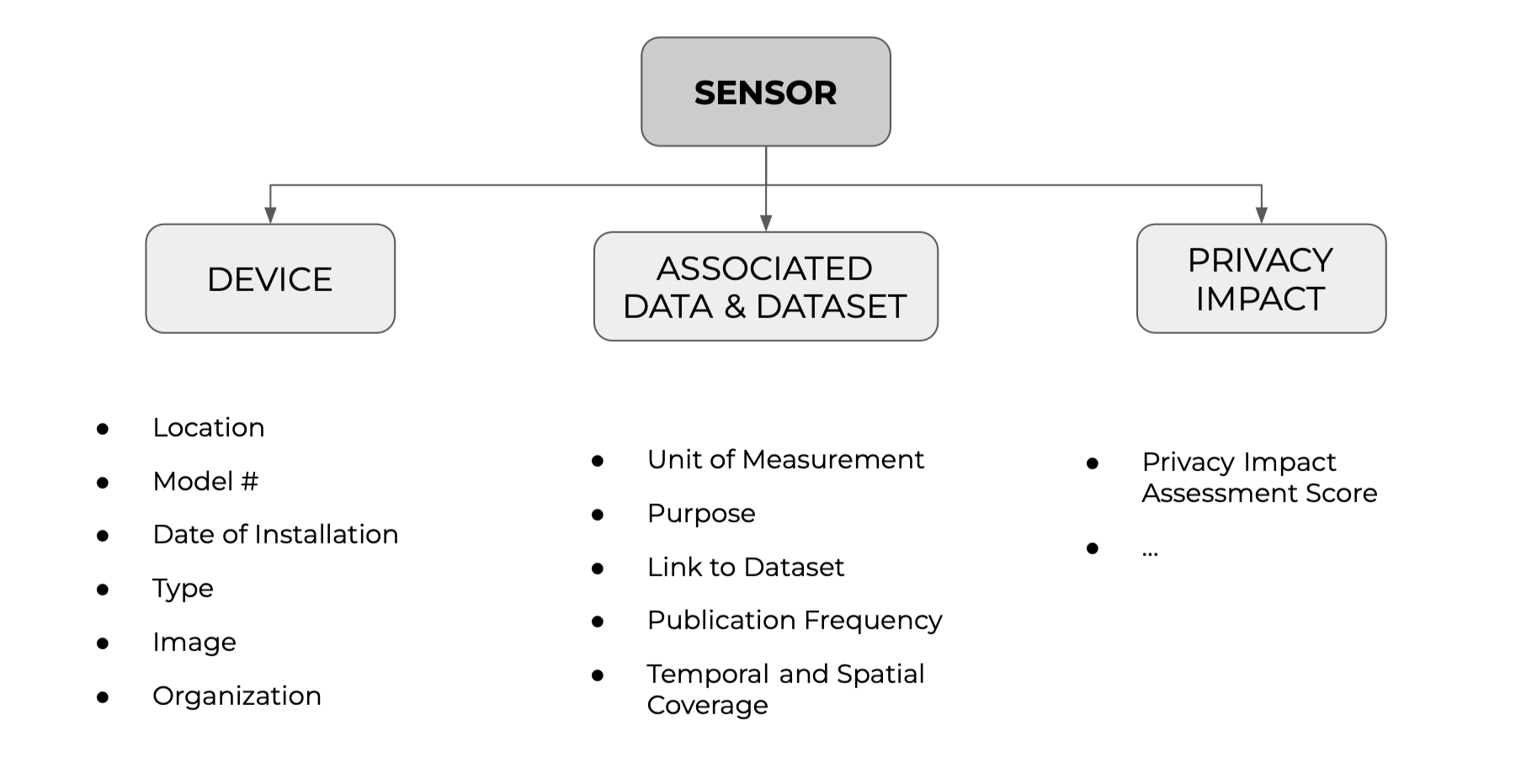Developing a Remote Sensor Registry for the City of Toronto
 Image of an Arterial Traffic Camera at Front and University from Toronto.ca
Image of an Arterial Traffic Camera at Front and University from Toronto.ca
Introduction
Currently, a wide variety of remote sensors that are both publicly and privately owned are deployed in Toronto. While a certain number of sensors are known to individual City divisions, there is no centralized source of information on the types of sensors that exist in the City and what information is being collected and stored. In accordance with their Digital Infrastructure Strategic Framework (DISF), the City of Toronto aims to enhance transparency when it comes to where and how sensors are used throughout the city’s public realm.
My capstone project brought together a diverse team from engineering, computer science, international relations, and information sciences. Our team aimed to design a public registry that catalogues and classifies these sensors. To meet the objective, the registry needs to comprehensively describe City-owned sensors installed across Toronto and present this information in a clear and accessible way to all potential registry users.
Research and Methods
The team conducted a jurisdictional scan to capture best practices from other municipalities with online sensor, open data, and IoT device registries. A policy and legislation review was carried out to inform relevant attributes to describe each sensor from legal, governmental, and policy perspectives, such as the privacy impact assessment score. We also researched ontology and formal knowledge representation to design the structure and meaning of relevant sensor attributes based on industry standards. In addition, a diverse set of perspectives were obtained from stakeholder surveys.
We designed an initial prototype using wireframing software, Figma. Multiple prototyping iterations and usability testing phases were conducted to yield the final design.
My Contribution
As a member studying computer science in this diverse team, I contributed to the technical part of the project. Using the leaflet library on R, I created the interactive map with the sensors with randomized attributes added as markers onto the map and carried out iterations of prototype testing. By doing a literature review on ontology, I proposed a fraction of the attributes to be included on the registry. With prior experience with web development and knowledge of JavaScript and map visualization, I provided recommendations on the technical implementation of the registry front-end and data back-end. In addition, by researching the data dissemination mechanism, we proposed a marketing plan for informing citizens of the registry.
Results
The final design represents sensors in an interactive map with a filtering mechanism and provides more detailed information about each sensor in a table. The figures below show part of the prototype and the list of sensor attributes. Additional features include a privacy impact assessment score and an API for dataset requests to accommodate a diverse range of user needs and public interests.

Figure 1: Prototype Screenshot

Figure 2: Selected Sensor Attributes
Evaluation
With 16 prototype tests, the team applied several critical design changes to ensure any sensor information of interest is accessible, comprehensive, and meaningful.
Impact
By designing a robust, detailed, and consistent registry of remote sensors in Toronto’s public realm, we will have enabled greater dissemination of information to Toronto’s general public. In doing so, the registry will permit the public to identify and understand what types of sensors exist in the places and be able to access available datasets and technical information.
Growth
In the beginning, I was drawn to this project as I had worked with many preprocessed datasets but was unfamiliar with the data collection process. With acknowledgement of the importance of ethics in data science, I was interested in data privacy and wanted to explore how information transparency and public trust could be improved by the creation of a public registry.
By the end of this project, I’ve found my answer to the above questions. Further, I encountered unforeseen challenges and learned more from my teammates, the supervisor, and the clients. Unlike my previous computer science projects, this project did not involve a large amount of coding but was even more challenging for me. Coming from an arts and science background, I initially struggled to understand engineering requirements. With the help of teammates in engineering, I was able to gradually catch up with the setting and combine ideas from science and engineering to propose practical solutions to the problems.
Besides challenges on the technical skills, this project provided me with a great opportunity of developing critical soft skills such as communication and teamwork skills. Working with team members from different fields puts a high demand on communication skills. I practiced explaining specific terminologies and conveying my ideas clearly in an easily understandable way. On the other hand, I learned to quickly capture ideas introduced by teammates from other domains that I was unfamiliar with.
Through this project, I’ve grown to be an accountable member of the team. Special thanks to the team members, Alyssa, Gabe, Sophie, Bill, and Ruth! I am very proud of us as a team. I would also like to thank Professor Mark Fox, as well as our clients for their guidance and encouragement throughout the project.